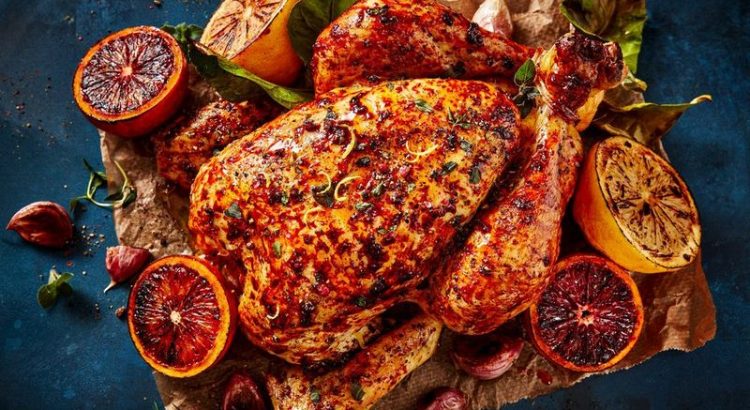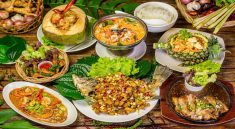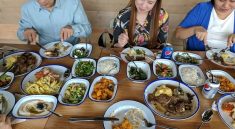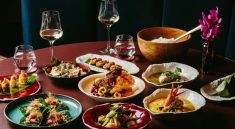Mclub World – A culinary photography trip: capturing the colors of taste combines two passions—travel and food—in one exciting experience. It is more than just snapping pictures of meals; it is about telling stories through colors, textures, and composition. On such a trip, photographers seek out unique markets, vibrant street food stalls, and fine dining restaurants, documenting the visual feast that accompanies every bite. This journey offers the opportunity to connect with chefs, food artisans, and local cultures, all while perfecting the art of food photography.
“Read More: Top 10 Business Finance Youtube Channels most Popular in 2025”
Planning Your Culinary Journey for Maximum Visual Inspiration
A successful culinary photography trip begins with meticulous planning. You need to choose destinations known for their food diversity and vibrant culinary traditions. Researching seasonal specialties ensures you capture dishes at their freshest and most colorful. Additionally, creating a flexible itinerary helps you adapt to unexpected opportunities, like stumbling upon a local festival or discovering a hidden café with photogenic plating. When planning, remember to balance shooting schedules with moments to enjoy the meals. The experience of tasting the dishes will inform how you present them visually. By immersing yourself in the flavors, you can better convey their essence through the lens.
Choosing the Right Photography Gear for Food and Travel
Selecting the right equipment is essential to achieve stunning food images while traveling. A lightweight camera with interchangeable lenses offers flexibility without weighing you down. A prime lens with a wide aperture is perfect for capturing detail in low-light restaurants, while a macro lens helps highlight intricate textures like herbs, sugar crystals, or delicate pastries. Accessories such as a portable tripod, reflector, and lens cleaning kit should also be part of your gear. Since food photography often involves close-up shots, maintaining sharpness and clarity is crucial. Investing in quality gear ensures your photos reflect the vivid reality of your subjects.
“Read About: Global Food Journeys That Redefine Culinary Exploration”
Mastering Natural Light Techniques for Culinary Photography
Natural light is a food photographer’s best friend, and learning to control it makes a significant difference in your results. Morning and late afternoon provide soft, warm tones that bring out the natural colors of ingredients. Positioning your dish near a window or outdoor seating area allows light to wrap around the food, creating depth and dimension. However, not every shooting location will have ideal lighting. In those cases, understanding how to use reflectors or diffusers can help you soften harsh shadows and balance the exposure. Mastery of light control elevates the professionalism of your work.
Exploring Local Markets for Authentic and Colorful Scenes
Local markets are treasure troves of vibrant photography opportunities. From baskets of ripe tropical fruits to stalls piled high with spices, every corner offers a new subject. Vendors often welcome friendly conversation, allowing you to learn more about their products while capturing candid portraits. Markets also offer dynamic lighting challenges, with sunlight streaming through canopies and contrasting with shaded areas. This variety allows you to practice adapting quickly, an essential skill for travel photographers. The visual chaos of a market can be transformed into compelling images with careful composition.
Collaborating with Chefs to Tell a Deeper Story
Building relationships with chefs during your trip can provide access to behind-the-scenes moments that most tourists never see. Chefs can share the inspiration behind their dishes, letting you incorporate narrative elements into your photography. Capturing the preparation process, from chopping vegetables to plating desserts, adds authenticity and depth to your collection. These collaborations also enhance your cultural understanding of the cuisine. By working closely with culinary professionals, you gain insight into traditional techniques, ingredient sourcing, and modern innovations. This context enriches the story your photos convey.
Capturing Street Food Culture and Its Vibrant Energy
Street food is often the heart of a city’s culinary identity. The sizzling grills, colorful sauces, and expressive vendors create a rich visual landscape. Photographing street food requires quick reflexes to freeze action shots, whether it’s a chef tossing noodles in a flaming wok or a vendor serving skewers fresh from the grill. Crowds and bustling movement add to the authenticity of these scenes. Using a slightly wider lens lets you incorporate both the dish and its environment, giving viewers a sense of place along with the food.
Paying Attention to Plating and Food Styling Details
While traveling, you may encounter dishes plated with extraordinary artistry. Paying attention to how chefs layer ingredients, arrange garnishes, and balance colors can inspire your own styling skills. Even if you are photographing a simple dish, adjusting angles, removing distractions, and ensuring the background complements the subject can elevate the image. Sometimes, a quick adjustment—like turning a plate slightly toward the light or adding a sprig of fresh herbs—makes all the difference. Observing and applying these small details ensures your photographs appear polished and intentional.
Post-Processing Techniques to Enhance Visual Impact
Post-processing plays a vital role in food photography. Subtle adjustments to exposure, contrast, and white balance can make colors pop without looking artificial. Cropping to improve composition and using selective sharpening to highlight textures can further enhance the viewer’s experience. Consistency is key when editing a series of images from one trip. Establishing a cohesive visual style through similar color tones or lighting adjustments ensures your portfolio feels unified. Careful post-processing transforms good shots into exceptional ones.
Balancing Travel Enjoyment with Professional Commitments
One challenge of a culinary photography trip is balancing the need to document everything with the desire to savor the experience. Setting aside certain meals purely for enjoyment prevents burnout and allows you to recharge creatively. This balance also helps you maintain enthusiasm for your craft throughout the journey. Travel fatigue can impact the quality of your work, so pacing yourself is essential. Remember, a fresh perspective often produces the most inspired photographs.
Turning Your Culinary Photography Trip into a Lasting Portfolio
A well-curated portfolio from your culinary photography trip can open new professional opportunities. Organizing your best shots into themed collections—such as markets, street food, or fine dining—allows potential clients to see your versatility. Writing captions that share the stories behind the images adds depth and personality to your work. Over time, this portfolio can serve as both a personal memento and a marketing tool, showcasing your ability to blend travel, culture, and food into a compelling visual narrative.




